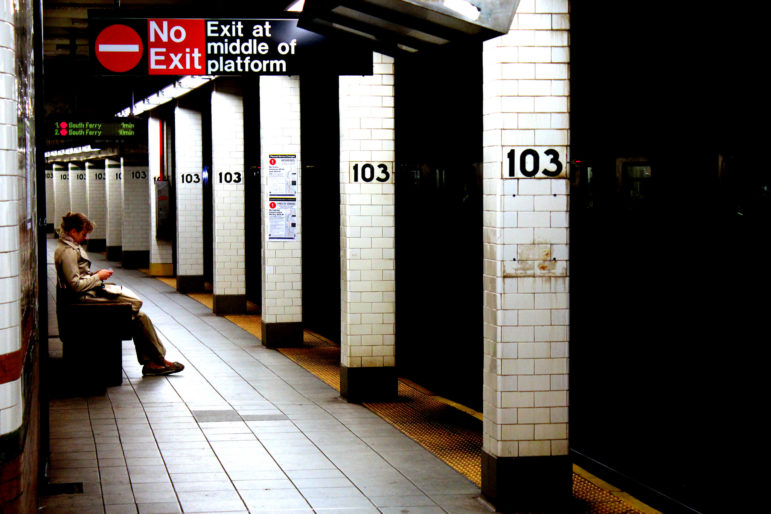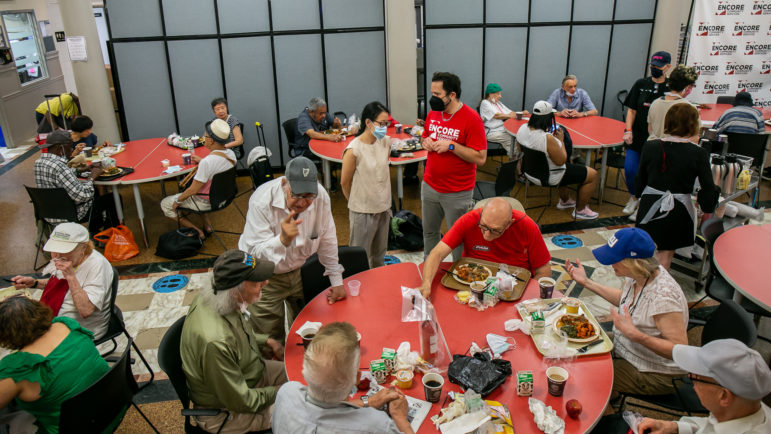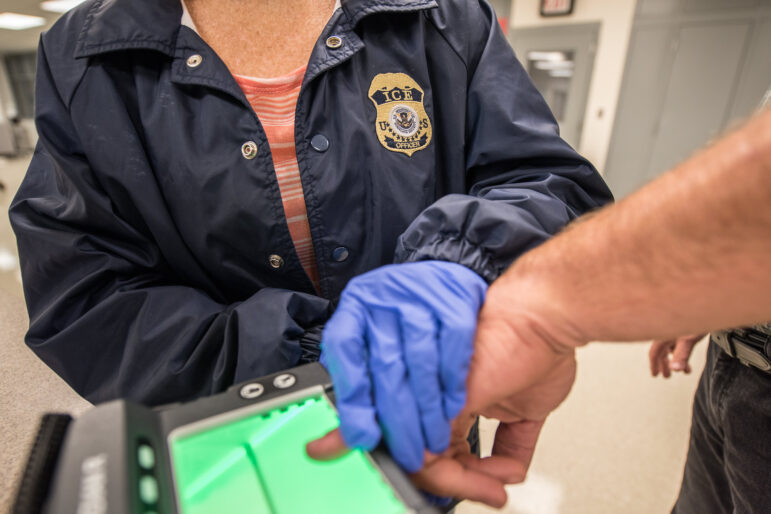
Manu Dreuil
In diagnosing subway delays, the media often rely on a report funded by corporations linked to foreign bribery scandals that later won work from the MTA.
As New Yorkers well know, the quality of service on New York City subways has been deteriorating precipitously, with delays more than doubling over the last five years. Why? The Metropolitan Transit Authority has offered several explanations, chief among them that the signaling system is old and requires an expensive replacement, which the Daily News and the New York Times each reported in their papers. But should we believe this explanation?
The Daily News and the New York Times each relied on the same two sources for their story; naturally, one was the MTA itself, and the agency apparently invited reporters to see “outmoded signal switches” controlled from “a dingy room.” But both papers also relied on an ostensibly independent evaluation in the form of a study conducted by the Regional Planning Association, a not-for-profit organization that, according to its mission statement, is dedicated to improve planning in the NY/NJ/CT region. The RPA reached a similar conclusion to that of the MTA: the subway service is deteriorating because of its antiquated signaling system which must be replaced by a “communications-based train control” system. Based on current levels of funding, the RPA estimated that these upgrades will take fifty years. Clearly funding must be increased substantially to speed the process up.
Or must it? The acknowledgments page of the May 2014 RPA study reads, “The study was funded by a joint grant from Siemens Industry, Inc. and Thales Transport & Security, Inc.” Less than a year later, in June 2015, the MTA announced that the Metropolitan Transportation Authority (MTA) has given preliminary approval to two contracts totaling $205.8 million to Siemens Industry Inc. and Thales Transport & Security “for the installation of a Communications-Based Train Control (CBTC) signaling system on the Queens Boulevard Line, one of New York City Transit’s busiest subway lines.”
Does it matter that the outside contractors paid for the study that both city newspapers rely on (there does not appear to have been another study and none is referenced by the newspapers) and that the MTA did not provide an independent evaluation of the system they chose? It does.
In the first place, Siemens and Thales have extremely spotty records as government contractors. In 2008 Siemens was fined $1.6 billion – yes, billion—by the US government and the European Union for bribing government officials all over the world in order to obtain contracts. Joseph Persichini, head of the FBI field office in Washington, D.C., said, “Their actions were not an anomaly. They were standard operating procedure for corporate executives who viewed bribery as a business strategy.” The fine was a record; as the Securities and Exchange Commission discovered, Siemens employees carried cash in suitcases. Siemens is currently on trial in Greece for bribing Greek officials with €70 million for a contract to supply electronic security equipment to the 2004 Olympics in Athens. Thales has a similarly problematic record and was fined €630 million in 2011, the largest fine ever by the French government, for bribing Taiwanese officials for a military contract.
Because our information about the subway’s signaling system comes from a study funded by corporations with a record of bribing government officials and because these corporations have a financial interest in it, it is impossible to know how soon the existing system actually needs to be replaced, whether the job is as big and difficult as the MTA and the RPA say it is, and indeed whether the system that Siemens and Thales promise to develop is the best system and whether the cost is reasonable.
Of course it is important to remember that delays in the subway system are good for Siemens and Thales because they raise riders’ anger and create pressure on politicians to approve whatever price Siemens and Thales ask for. And we therefore must wonder what the true cause of the delays is. The subway system is old, but it was running with fewer than half the delays just five years ago. David Gunn, who managed to bring the subway system back to stellar performance from its decay of the 1980s, believes that the fault is simply poor maintenance: “If you do the scheduled overhaul of a car fleet on a regular basis, you shouldn’t get a rapid decline in the reliability,” Mr. Gunn told the New York Times. In its list of explanations the MTA cites high ridership, but it should be noted that ridership today is not higher than it was in the 1950s.
The MTA selected contractors with a spotty record, but the solution is not to hire other contractors. First, whoever the contractor is, the subway system will be hostage to it for the foreseeable future whenever repairs or improvements are called for, with no power to negotiate the price. (The contract would no doubt stipulate protections against such opportunistic behavior, but in reality contractors invariably find legal ways to shirk their responsibilities, while the public always blames “the Government” for not anticipating these avoidance tactics.)
An equally daunting problem, though, is the fact that the officials who decide how much to pay pay with other people’s money; to government officials a million is the same as a billion. This problem was perhaps most visible when New York City’s Mayor Bloomberg, a successful businessman in the private sector, did not see anything suspicious about a contract to automate the city payroll that ballooned from $73 million to $700 million. The public employees’ union warned him repeatedly over the course of six years that the contractor was bilking New York City taxpayers, and so did the city’s director of the Office of Payroll Administration but still the work continued. The corruption might easily have been successful if not for a disgruntled employee of the contractor who forced the hand of the Department of Investigations. The contractor, without any resistance at all, paid back $500 million to the city.
There is no doubt that the subway system needs both fixing and major improvements, but as long as we rely on private contractors to do the work the quality of service will continue to falter and the costs will continue to be way beyond our means. The only solution is to remove all private, profit-seeking interests from any involvement with both the design and the decision-making. The MTA needs to hire its own engineers and researchers and also harness the brains of the academic community in New York City and New York state in order to create a subway system that New Yorkers deserve.
Moshe Adler teaches privatization and urban economics at Columbia University and at the Harry Van Arsdale Jr. Center for Labor Studies. He is the author of Economics for the Rest of Us.








